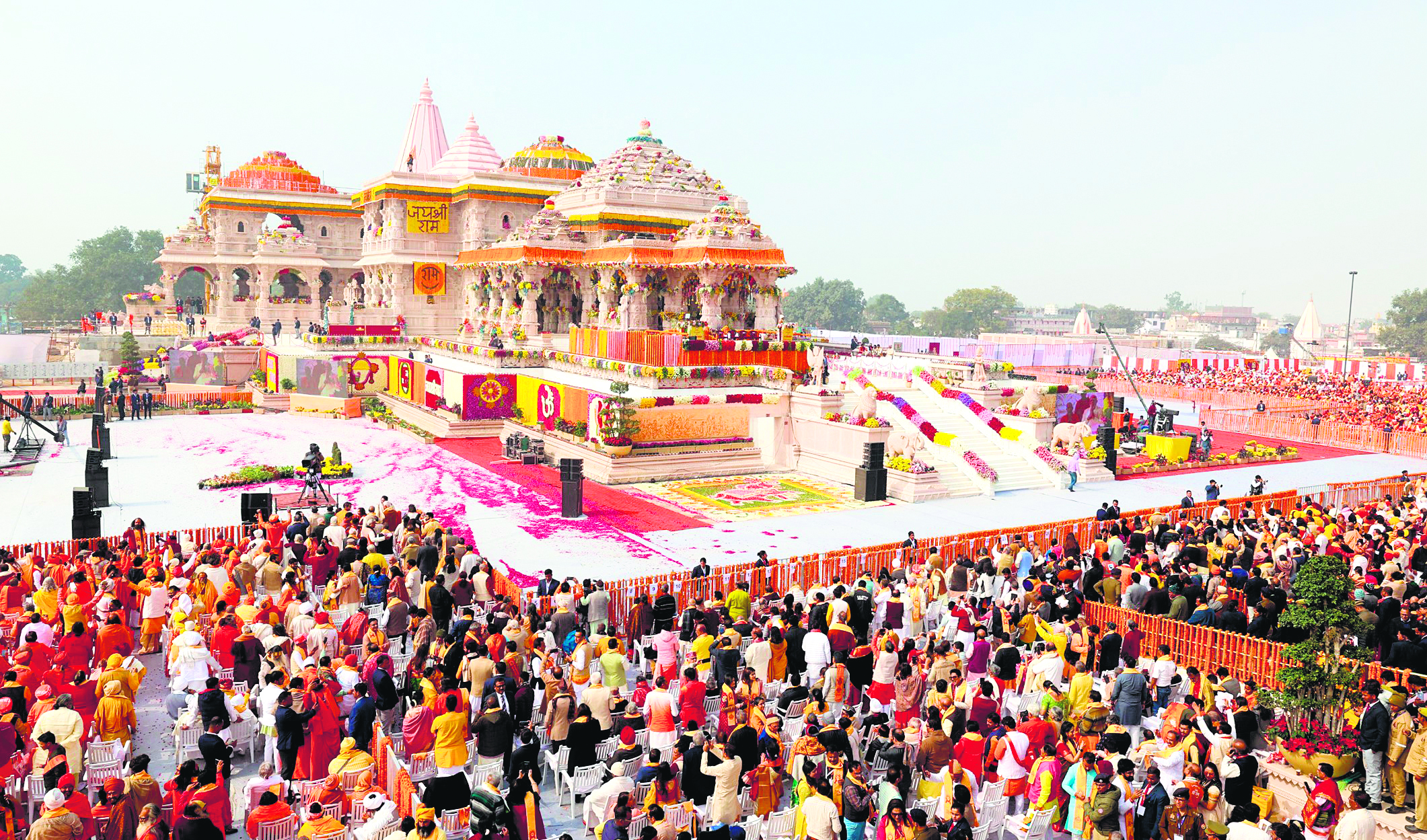
In the sacred town of Ayodhya, where history intertwines with spirituality, the construction of the Ram Mandir stands as a testament to the deep-rooted sentiments of Hindus and the cultural fabric of India. The journey toward the realization of the Ram Mandir has been fraught with controversy, legal battles, and emotions that echo through the ages.
For Hindus, Ayodhya holds a special place as the birthplace of Lord Rama, a revered deity whose life and teachings are embedded in the cultural consciousness of millions. The construction of the Ram Mandir signifies more than just the laying of bricks; it represents the revival of a cultural heritage and the fulfillment of a longstanding dream.
The significance of the Ram Mandir extends beyond religious boundaries, encapsulating a sense of national identity for Indians. It’s a symbol of unity, echoing the rich tapestry of India’s pluralistic society. The diverse threads of beliefs come together, weaving a narrative that transcends temporal and spatial confines.
To understand the importance of the Ram Mandir, one must delve into the historical layers that shroud Ayodhya. The site has witnessed epochs of change, from ancient civilizations to medieval empires, each leaving its imprint on the sacred landscape. The Ram Mandir, with its resplendent architecture, becomes a living chronicle of this history, bridging the past with the present.
The emotional resonance of the Ram Mandir project echoes across generations, uniting people in a shared narrative of faith and heritage. It’s not merely about the construction of a physical structure but the reclamation of a spiritual space that has endured centuries. The hymns of devotion, the tales of Lord Rama’s valor, and the cultural ethos converge in the bricks and mortar of the Ram Mandir, creating a sanctuary for believers.
For Hindus, the Ram Mandir is more than a religious edifice; it’s a reflection of their collective consciousness. The journey toward its construction has been a pilgrimage of faith, marked by unwavering devotion and an unyielding belief in the righteousness of the cause. It symbolizes the resilience of a community that has weathered storms, both metaphorical and literal, to see its cultural aspirations materialize.
The construction of the Ram Mandir serves as a beacon of hope and inspiration. It’s a reminder that cultural heritage is not static but evolves, adapting to the changing tides of time. The architectural marvel of the temple becomes a canvas, where the artistry of the past meets the aspirations of the future. It’s a living heritage, pulsating with the energy of devotion and the spirit of a resurgent Ayodhya.
In the broader context of Indian society, the Ram Mandir is a symbol of cultural inclusivity. It signifies the coexistence of diverse belief systems, fostering an environment where pluralism thrives. The inclusive spirit of the Ram Mandir project is a testament to India’s secular ethos, where the celebration of one’s faith does not diminish the respect for another’s.
The construction of the Ram Mandir also holds geopolitical implications, shaping the narrative of India’s identity on the global stage. It sends a message of cultural assertion, asserting that India’s heritage is not just a relic of the past but a living, breathing entity that continues to evolve. It positions Ayodhya as a spiritual hub, inviting the world to witness the confluence of tradition and modernity.
In conclusion, the Ram Mandir in Ayodhya is a poignant chapter in India’s cultural narrative. It transcends the boundaries of religion, resonating with the hearts of millions who see it as a symbol of cultural resurgence and national pride. The construction of the Ram Mandir is a testament to the indomitable spirit of a people who, against all odds, have reclaimed a sacred space that embodies the essence of their beliefs and aspirations.
Manju Sharma is a lawyer by profession, daughter of a freedom fighter and a political analyst.